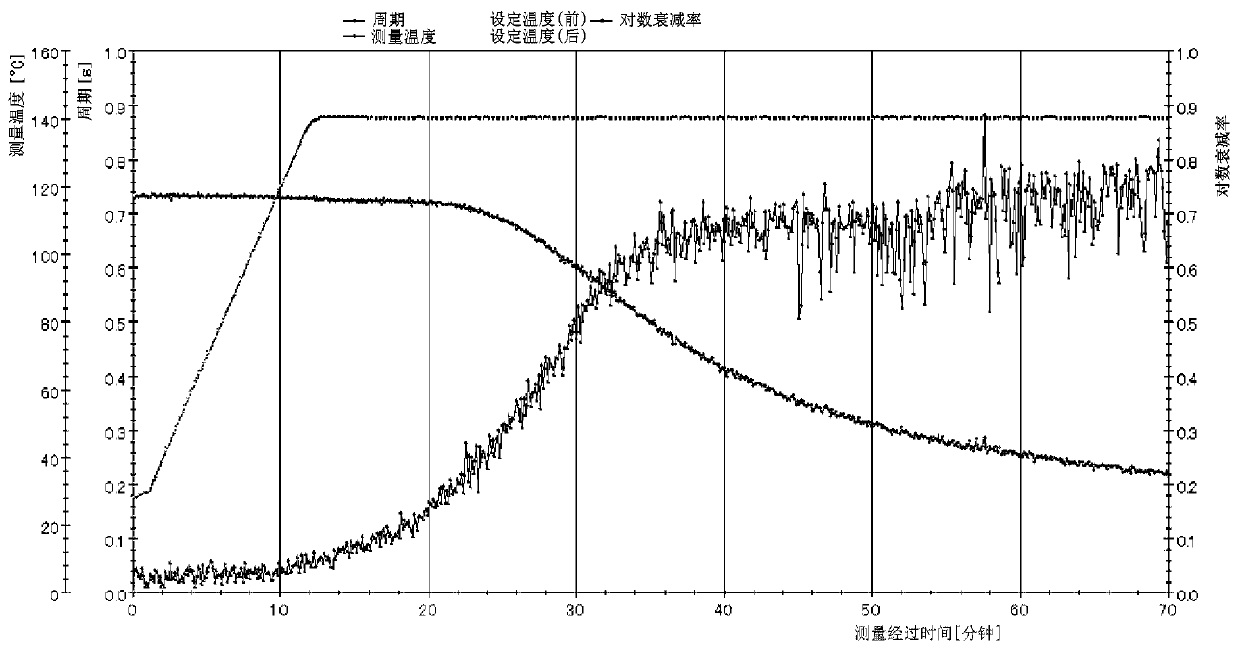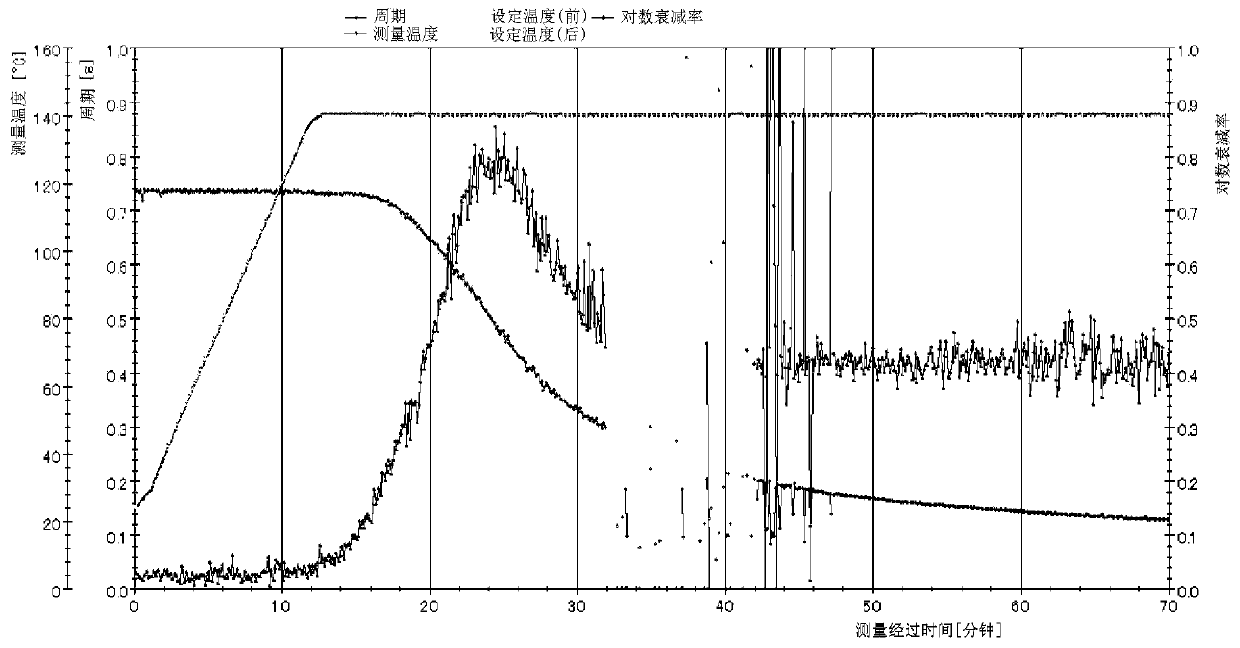Thermosetting resin composition
A technology of resin composition and heat curing, applied in the direction of adhesive types, ester copolymer adhesives, unsaturated alcohol copolymer adhesives, etc., can solve the problem of unclear composition of the cured composition, and achieve low cost , high safety effect
- Summary
- Abstract
- Description
- Claims
- Application Information
AI Technical Summary
Problems solved by technology
Method used
Image
Examples
Embodiment
[0266] Hereinafter, the present invention will be described in more detail based on examples. In addition, this invention is not limited to the following Example. It should be noted that the parts herein represent weight.
Synthetic example 1
[0268] A follow-up test was performed on the resin composition described in the prior art (Japanese Patent Application Laid-Open No. 9-59543). As a comparative resin, 375 parts of tert-butyl methacrylate (manufactured by Kyoeisha Chemical Co., Ltd.: Light Ester TB) and 125 parts of hydroxyethyl methacrylate (manufactured by Kyoeisha Chemical Co., Ltd.: Light Ester HO-250) were used. A monomer mixed liquid was prepared, and 25 parts of t-butyl peroxyoctanoate and 3 parts of 2,2'-azobisisobutyronitrile were dissolved in xylene as initiators to prepare an initiator solution. 500 parts of xylenes were charged into a stirring flask, and the monomer solution and the initiator solution were added dropwise while enclosing nitrogen gas. The polymerization temperature at this time was set to 130°C. It was dripped over 4 hours, and aging was performed at 130 degreeC for 10 hours, and the comparative polymer solution A was obtained.
Synthetic example 2
[0270] 240 parts of n-butyl methacrylate (manufactured by Kyoeisha Chemical Co., Ltd.: Light Ester NB), 110 parts of hydroxyethyl methacrylate (manufactured by Kyoeisha Chemical Co., Ltd.: Light Ester HO-250), and 30 parts of styrene 25 parts of 2,2'-azobis(2,4-dimethylvaleronitrile) (Wako Pure Chemical V-65) as initiator were dissolved in aromatic hydrocarbon (T- In SOL 100), make initiator solution. 250 parts of aromatic hydrocarbons (T-SOL100) and 250 parts of cyclohexanone were charged into a stirrable flask, and the monomer solution and the initiator solution were added dropwise while enclosing nitrogen gas. The polymerization temperature at this time was set at 100°C. It was dripped over 2 hours, and aging was performed at 100 degreeC for 4 hours, and the polyol A was obtained.
PUM
| Property | Measurement | Unit |
|---|---|---|
| boiling point | aaaaa | aaaaa |
| hydroxyl value | aaaaa | aaaaa |
| thickness | aaaaa | aaaaa |
Abstract
Description
Claims
Application Information
 Login to View More
Login to View More - R&D
- Intellectual Property
- Life Sciences
- Materials
- Tech Scout
- Unparalleled Data Quality
- Higher Quality Content
- 60% Fewer Hallucinations
Browse by: Latest US Patents, China's latest patents, Technical Efficacy Thesaurus, Application Domain, Technology Topic, Popular Technical Reports.
© 2025 PatSnap. All rights reserved.Legal|Privacy policy|Modern Slavery Act Transparency Statement|Sitemap|About US| Contact US: help@patsnap.com



